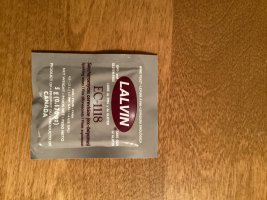Tl/dr: take S.G. at same time you add yeast, then again once bottling. If add sugar to sweeten take then as well so you can measure abv.
Long Novella Version:
So, you want to use a hydrometer at a couple different points. I'll walk you through my process:
Day 1: put fruit in brew bag inside bucket, put half a gallon of water in a pot on the stove at low heat. Add sugar, crushed cambden tablet and pectic enzyme. Once sugar dissolves, remove from heat, pour over fruit and add the remaining water. Hook up heater and leave alone.
I don't add yeast yet or take a specific gravity reading as if the fruit was frozen or water too hot, the reading will fluctuate and I want it to be in the ballpark consistency wise. The other reason I haven't added the yeast is to give the pectic a day or two to work on the fruit and the presence of alcohol can make it harder.
Day 2 or 3- Take the initial S.G. reading and make adjustments if you need to, either adding water or sugar to raise and lower it. Once you have the S.G you want, write it down somewhere you won't lose. I have a journal for my recipes showing what I added, how much, when I started, racked and bottled. What yeast I used, sg. That all gets written down here.
Day 2/3 to ??- This is the primary fermentation stage. How long it lasts depends on multiple factors. Some people leave it alone, I stir daily, morning and night(at least for the first week). This is where my setup with the cheesecloth just rubberbanded in place is handy, it's easy to remove to stir and then replace. I am not worried about oxygenation at this stage as the offgassing from the fermentation protects the wine from this. Once I can no longer hear it bubbling, or it has gotten much slower/weaker I will take my second S.G. reading. If it is close to done(which I count as under 1.010), I will remove the fruit, squeezing all the juice I can out of the bag and into the bucket.
If I fermented to dry (1.000 or lower), and don't add any additional sugar I never check S.G. again. With the initial and final numbers you can use a online abv calc to get your alcohol percent.
https://www.meadmakr.com/abv-calculator/
Then I rack to secondary.
1 Month Later: I will rack off the lees into another carboy.
3-10 Months Later: Rack again if needed. Here is where I start making adjustments- Adding acid blend, adding oak, adding more sugar. If you add more sugar, or hadn't fermented to dry during primary I would measure S.G again. If you add sugar, you may want to wait a week or so before bottling to ensure fermentation is done, as if you still have active yeast, it may have turned some of those sugars to alcohol. If I have made any adjustments, it gets set aside for at least another month before I consider bottling.
Finally, bottle when ready. As you can see above I let it age in the glass carboy for a decent length of time. This is referred to as 'bulk aging'. You can bottle earlier than I do but if the yeast is still active, lees haven't fully settled, by betting earlier, each bottle could have more or less of the lees, and may end up with slight variations in flavor.
I usually wait a month or so after bottling to try, so bottle shock is no longer an issue(unless you are very skilled or have a fancy setup bottling does expose wine to oxygenation and it will impact the flavor for a time).



